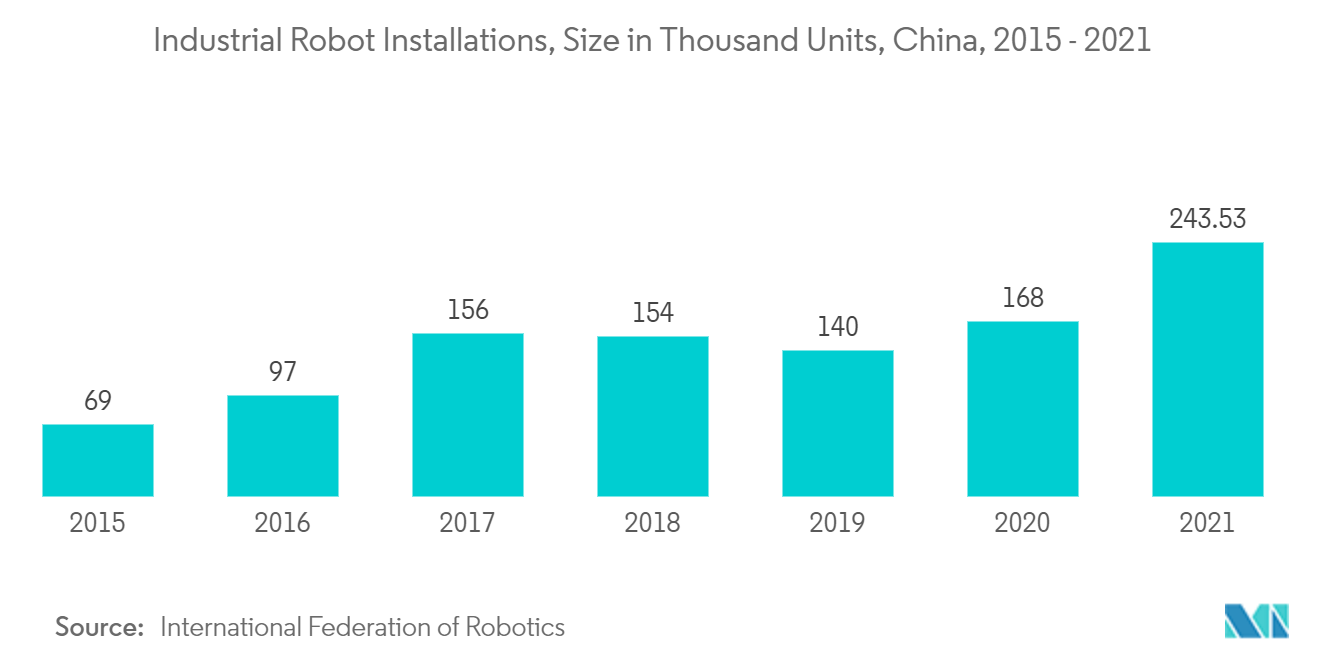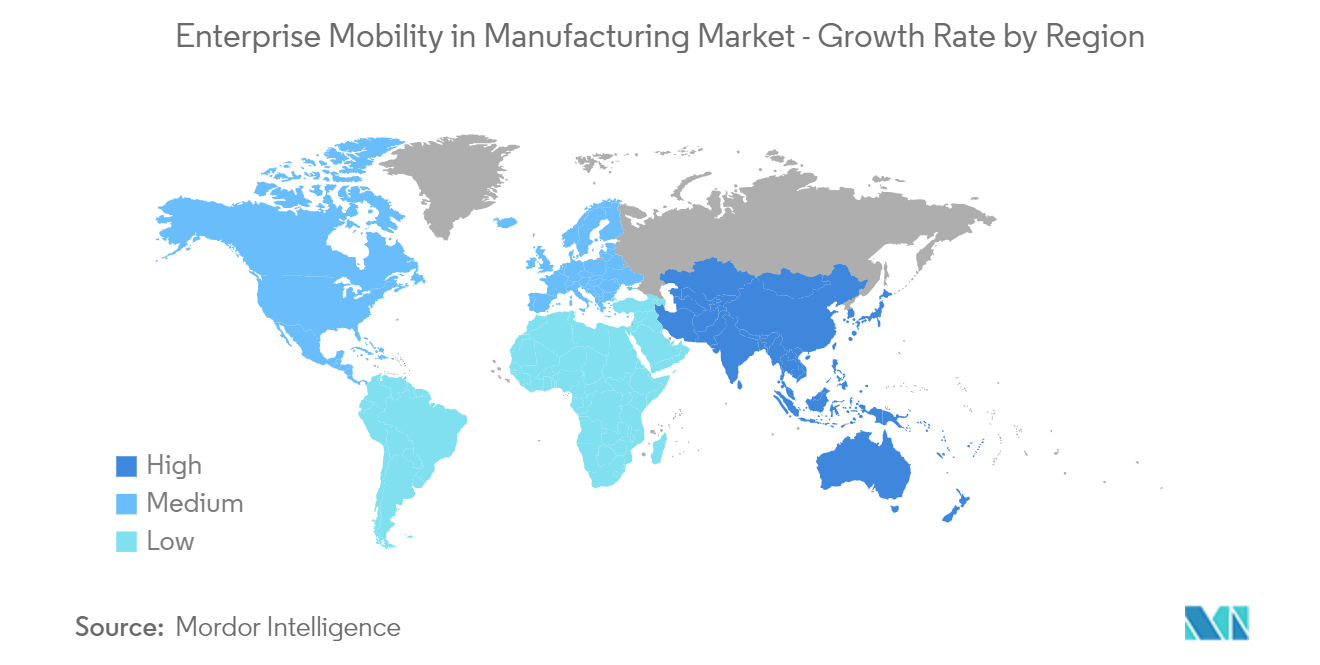Market Trends of Enterprise Mobility in Manufacturing Industry
Industrial Internet of Things (IIoT) has Accelerated the Use-cases in the Market
- The manufacturing sector has entered the fourth industrial revolution, making the deployment of IoT-enabled corporate mobility more of a requirement than a choice. The linked mobile device aids producers in collecting and analyzing data across equipment, enabling flexible and efficient processes to produce high-quality products at reasonable prices.
- Further, Industrial IoT devices may alert factory technicians about downtime, breakdowns, unforeseen anomalies, etc., which can boost throughput by lowering machine downtime. Such benefits offered by IIoT devices in the manufacturing sector may drive market growth in the forecast period.
- Moreover, IoT-powered customized mobility solutions for enterprises may help business owners monitor and manage operations on and off the ground. These solutions can also optimize various processes to raise output and efficiency. Meeting deadlines can also benefit from increased productivity.
- Furthermore, autonomous robot usage is anticipated to increase IIoT significantly over the next five years, especially in supply chain activities that include low-value, potentially hazardous, or high-risk duties. For instance, manufacturing, final assembly, and warehousing are already heavily reliant on autonomous robots. Autonomous robots will probably continue to expand in these supply chain sectors in the future, freeing up human labor for more strategic, risk-free, and valuable jobs.
- For instance, according to IFR, industrial robots in China were recorded to be around 243,530 units last year, a 44.95% rise in the installations compared to the previous year. The significant increase in industrial robots could drive the IIoT growth, thereby responsible for the market growth.

Asia-Pacific to Witness the Significant Growth Rates
- The need for BYOD & business mobility solutions and services throughout the region is being further driven by the increased acceptance of technologically sophisticated solutions like artificial intelligence, big data, etc., along with the adoption of cloud infrastructure across various Asia-Pacific countries.
- The usage of mobile technologies, such as IoT and mobile devices, in manufacturing processes across organizations has increased as a result of Industry 4.0. Companies deploy sophisticated apps in addition to keeping an eye on supply and demand for the created goods. As a result, they can close the supply-demand imbalance while also cutting costs and increasing efficiency. They can assess the industrial application with the aid of the EMM software and guarantee that the resources they have gathered are accessible.
- Additionally, it is expected that in the upcoming years, the Asia-Pacific BYOD & business mobility market will increase due to growing IT investment across various industries and numerous government programs, including digitalization, smart cities, and smart nations.
- The COVID-19 epidemic has impacted numerous regional industry sectors. Manufacturing enterprises in the region are anticipated to boost demand for new enterprise mobility technologies in order to support the work-from-home trend and guarantee optimum company outputs. The rapid expansion of the e-commerce industry and digitalization across the retail sector would fuel market growth. Furthermore, the supply chain's productivity is being increased by businesses employing corporate mobility solutions.


